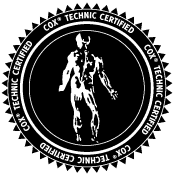The Top Toronto Knee Osteoarthritis Treatment: Exercise
Knee pain…the probability that you experience or will experience knee pain or know someone who suffers with knee pain is high. Knee pain due to osteoarthritis is a shared condition around the world. Yorkville Chiropractic and Wellness Centre encourages our Toronto chiropractic knee pain patients to exercise. We know we come across sounding like a broken record on exercise, but exercise remains ‘king’ when it comes to knee pain care! And other new knee pain studies tout a few new treatment approaches to try, too.
OSTEOARTHRITIS
Osteoarthritis (OA) is a disease of degenerated cartilage or wear and tear harm to cartilage giving rise to disability and other health problems impacting over 500 million adults around the world. Hip OA and knee OA are the leading types with knee OA being the most common. The goal of treatment of OA is management and reduction of symptoms, not cure. Drug approaches include NSAIDs while non-drug approaches incorporate exercise (walking), aerobic exercise, weight loss, diet, hot/cold therapy, electrotherapy to improve muscle strength and reduce joint pain. Surgery (arthroscopy and joint replacement therapy) was described as a last treatment option. The authors of this report highlighted that precautions to keep joints healthy and disease-free were suitable and essential. (1) Those are desirous goals.
DESIRED RESULTS OF TREATMENT FOR KNEE OA
How do you determine if an intervention is helpful to your pain? Your desired outcome is the most important. For osteoarthritis, one of the main diseases that disables us humans, walking for pleasure was found by data collected for the Genome Wide Association Study (GWAS) to be statistically significant for tackling knee osteoarthritis at the genetic level. (2) Today’s researchers are also working to define just what “minimal clinically important change” is, what the minimum improvement a patient like you would perceive or say made going through the treatment was worthwhile. For patients with osteoarthritis who went through non-surgical treatments, the amount of knee flexion they could do after treatment was from 3.8 to 6.4 degrees. Other pertinent information researchers found from the 72 studies they analyzed was that an increase in flexion was linked to decreased pain and increased function. (3) These are positive findings!
…AND WHAT ABOUT PLASMA-RICH PLATELET THERAPY?
In the non-surgical realm of treatment for knee osteoarthritis, platelet rich plasma (PRP) injection has grown in availability alongside traditional exercise for knee OA pain. A randomized control trial compared three treatment combos PRP injection alone (three weekly injections), exercise alone (6 weeks program/12 sessions of strengthening and functional exercise), and PRP with exercise. At 24 weeks post treatments, the PRP did not change pain in mild-to-mode knee OA patients compared to exercise alone. Actually, the exercise alone group outcomes were clinically superior for function and health related quality of life. Even though the PRP increased cost to the combined treatment, it didn’t show itself to be superior to exercise alone either. The researchers ended their paper with the statement that exercise alone was recommended to decrease pain and improve function. (4) Certainly, more studies will continue to document the impact of such treatments as PRP.
CONTACT Yorkville Chiropractic and Wellness Centre
Listen to this PODCAST on Osteoarthritis of the Knee with Dr. Luigi Albano on The Back Doctors Podcast with Dr. Michael Johnson as he details the effective gentle, adapted protocols of The Cox® Technic System of Spinal Pain Management in treating the osteoarthritic knee! A beneficial, relieving treatment approach to include along with exercise!
Schedule your Toronto chiropractic appointment soon. From what we read, it seems like exercise is still ‘king’ in dealing with osteoarthritis of the knee. We can help you find the right exercises and even integrate some distraction to help the knee.


